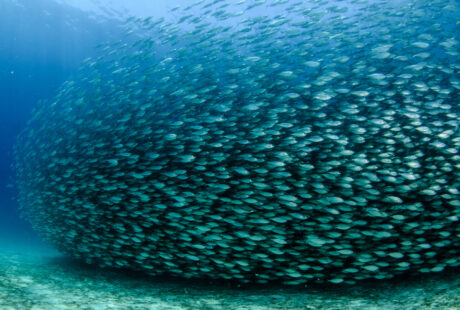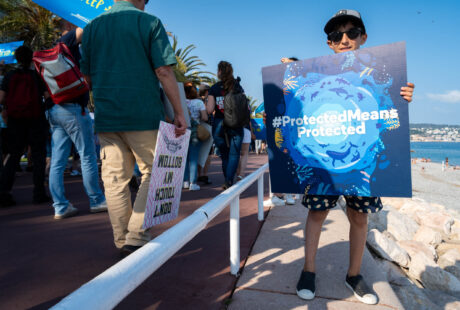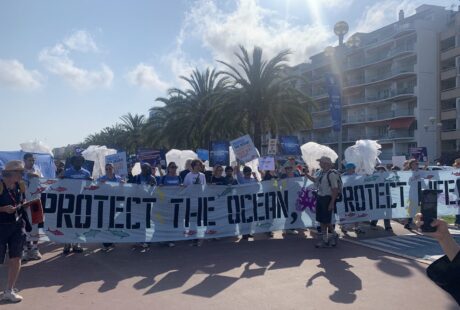Monica Verbeek, Executive Director of Seas At Risk, shares why Good Environmental Status of our seas and ocean was not achieved by 2020, as foreseen in the EU’s Marine Strategy Framework Directive, and the revisions needed to ensure real improvement towards a healthy ocean.
What are the current and future challenges to the protection of seas and ocean in Europe?
Our European seas are not a good state. We failed to reach “Good Environmental Status” for the European seas and ocean by 2020, which was the objective of the Marine Directive.
We are learning more and more about the crucial link between ocean and climate, including the inevitable impacts of climate change on the ocean.
But climate change effects on the ocean are not the sole stress factor. The European Blue Economy is expected to double by 2030, in a so-called “blue acceleration” that will see human activities adding more stressors to the marine environment. We already have wind farms in Marine Protected Areas (MPAs), and many more are planned. With a lack of space to accommodate current activities at sea, how can we reconcile the need to protect 30% of the ocean by 2030 with a 25-fold increase in offshore wind energy, for example? Some of the most damaging activities clearly have to be phased out, such as bottom trawling in sensitive areas, and of course offshore oil and gas.
Where does the Marine Directive fit within the current and future policy landscape for climate and biodiversity protection?
The Marine Directive is seen as a separate pillar that considers the environment, while sectoral policies support the growth of the Blue Economy, with little mitigation of environmental impacts. This approach fails to acknowledge that the Blue Economy and ocean protection are closely intertwined.
The current climate and biodiversity crises show the clear need for a healthy ocean, and the Marine Directive should set the environmental boundaries for the Blue Economy. As a baseline, only those activities that do not threaten Good Environmental Status and do not overstep thresholds should be allowed. The precautionary principle should apply where there is any doubt. The Marine Directive should therefore set relevant descriptors and thresholds in an enforceable manner and with clear deadlines that must not be overstepped.
Recent developments under the Green Deal provide opportunities for synergies and coherence with upcoming policies and legislation. The Biodiversity Strategy, for example, foresees protection targets and non-deterioration targets that will help to meet the target of Good Environmental Status of our seas and ocean. The Nature Restoration Law also provides a significant opportunity to facilitate Good Environmental Status.
Why has the Marine Directive not fully delivered on its objective of Good Environmental Status?
Despite being drafted as measures-based, the Marine Directive ended up being process-based. Those processes provide us with valuable assessments and reports, but few effective measures to obtain Good Environmental Status.
The Marine Directive is not enforceable in terms of its objective. It does not define thresholds that must be reached within a certain time frame nor effective enforcement mechanisms.
The delivery of Good Environmental Status depends on measures that are defined in sectoral policies that are neither coherent with nor subject to the Marine Directive. This is partly due to the lack of clearly defined and enforceable measures in the Directive and partly due to the lack of political will to protect the marine environment if doing so risks short-term socioeconomic impacts. Earlier this week, for example, the Fisheries Council continued to allow overfishing (in spite of the obligation to end it under the Common Fisheries Policy) for socioeconomic reasons. The socioeconomic fall-out of worsening the biodiversity and climate crisis through continued overfishing is long term and is thus routinely overlooked in Fisheries Council decisions.
This lack of policy coherence is underpinned by an organisational deficit. The core of the Marine Directive is cross-sectoral, ecosystem-based management. All directorates-general and national ministries affecting or affected by the ocean should be responsible for implementing the Marine Directive.
A final issue that hinders delivery of the Marine Directive is the lack of resources. Teams in the European Commission and Member States dealing with reporting and other deliverables under the Marine Directive lack the necessary capacity and resources to work effectively.
What can be done to make sure the Marine Directive delivers in the future?
Three aspects need to be addressed: enforceability, coherence with sectoral policy, and organisational deficit. A reform of the Marine Directive will not help if sectoral policies continue to be developed separately.
The development of new legislation under the European Green Deal, such as the Biodiversity Strategy’s fisheries action plan or the new Nature Restoration Law, offers significant opportunities to improve the situation. The thresholds for Good Environmental Status defined under the Marine Directive should be incorporated directly in sectoral policies and automatically trigger measures in case of non-compliance. For instance, the threshold developed to achieve seabed integrity under the Marine Directive could be part of the new Nature Restoration Law, with non-achievement automatically suspending damaging activities for the seabed such as bottom-trawling.
Posted on: 21 December 2021



